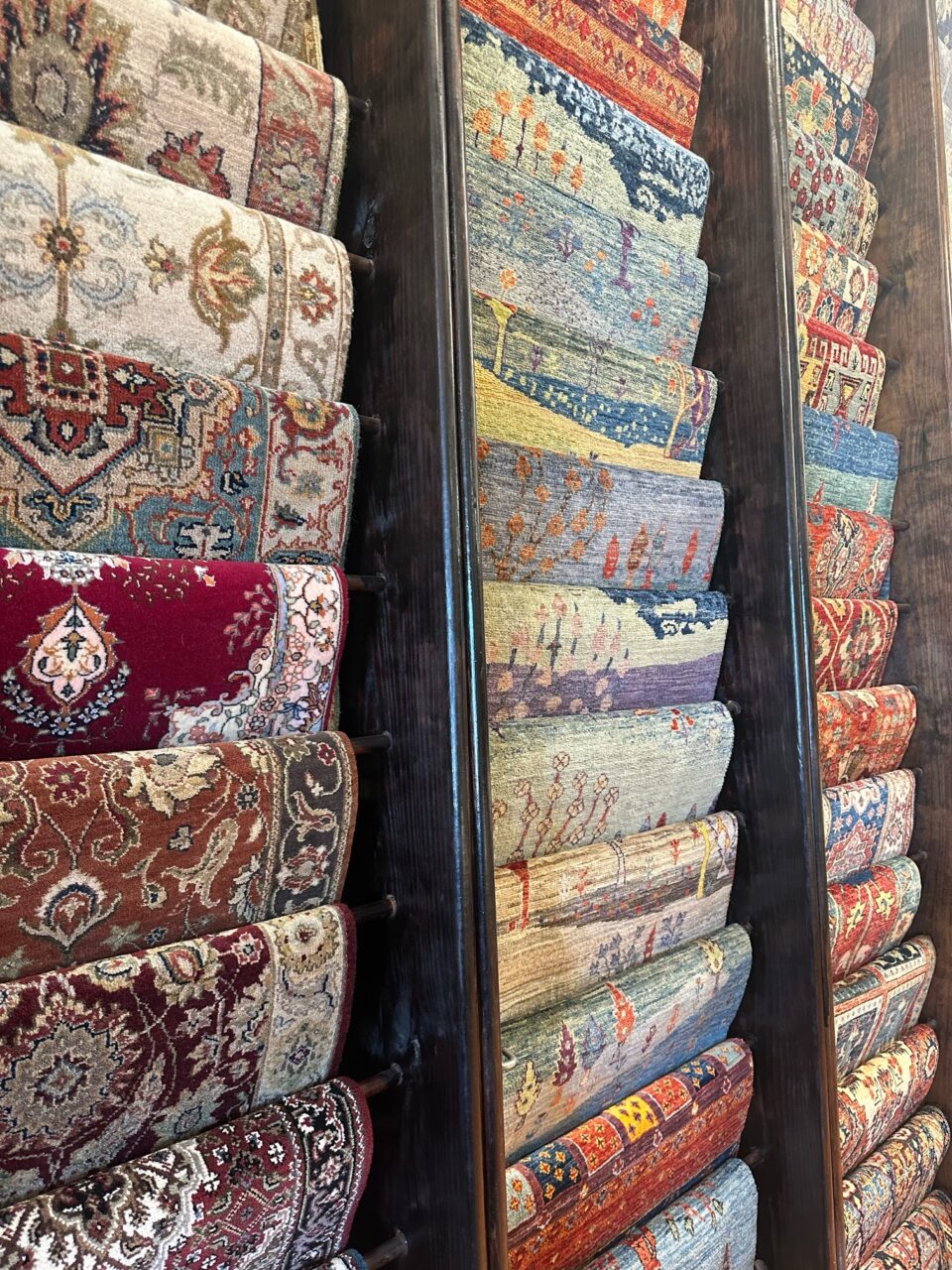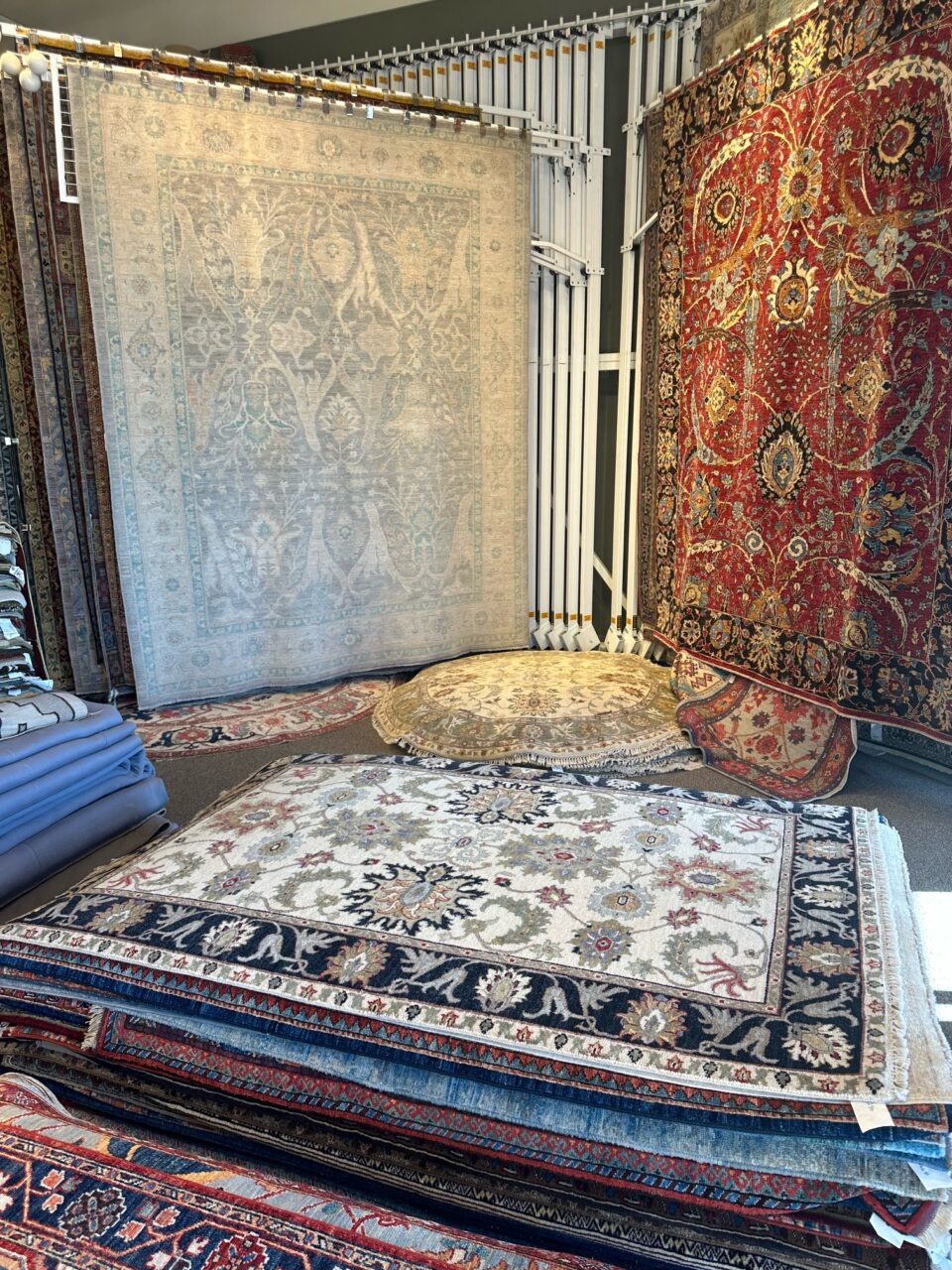Unwrapping the Education, Materials, and Longevity of Rugs

Rugs have been a statement piece in all homes for centuries. Kevin Sagakhaneh of Rugs by Saga shares insights on the education of these floor coverings, materials, and longevity. Dive into the world of rugs with his scouted expert knowledge!
How are rugs made
There are three distinctive types of rug production, each type has pros and cons.
Machine-made are just as it sounds. A CAD drawing is made of the design, and transferred to industrial-size fabrication machines, where (usually) polypropylene yarns are secured to a plastic grid backing, making machine-made rugs quickly and inexpensively.
Tufted rugs can be labeled hand-tufted or hand-made. This process involves gluing the pile of the rug into a glue bed, and the rug is backed by cloth. Prone to shedding and eventual breakdown of the glue, the return on Investment isn’t wonderful, since the tufted rugs are marketed as “Handmade” and are very misleading to the public at large.
Hand-knotted rugs are woven by humans. The typical pile of rugs are woven from hand-dyed woolen yarns, and the weavers follow a map to instruct them as to the color yarn to use for each knot. The foundation of a hand-knotted rug is the “fringe” that usually shows on the ends of the floor covering. A hand-knotted mat takes on average three weavers working on say, a 9×12 size, roughly six to nine months to weave.
Where are rugs made?
Hand-knotted floor coverings are woven typically in the Middle and Far East. A centuries-old tradition that encompasses countries such as Iran, Turkey, Afghanistan, Pakistan, India, China, Kazakhstan, and Morocco, to name the majority of the main weaving areas. Iranian or (Persian) rugs are considered the best, while Afghani woven pieces are just about equal in ranking.
What drives the price of these floor coverings?
KPSI or Knots Per Square Inch has dominated pricing of hand-knotted floor coverings for centuries. The more knots per square inch, the more intricate the pattern, the longer it takes to make. This directly affects pricing. There has, however, been a recent addition to pricing, and color plays a key role. Whatever colors are ‘trending’ seem to have a price jump, due to the offending color of the year.
Whereas machine-made rugs are manufactured quickly and with minimal human interaction in the process, the prices are tend to be low. Hand-tufted rugs come somewhere in the middle between Hand Knots and Machine Made.
Why Choose hand-knotted?
Being a relatively “green” business, it makes sense to invest in a hand-knotted floor covering. Anything made by humans over a period of months typically results in a far superior product. From hand carding the wool, to dye baths, and the knotting and finishing process, every aspect of weaving entails numerous pairs of eyes upon the piece being prepared for market. A hand-knotted rug will last generations upon generations. People who invest in this quality typically pass these floor coverings down to family, who in due time, do the same.
How Rugs By Saga operates
We are open to both the general public as well as the Trade. A potential customer will come into the store, we go through the floor coverings in the size that they desire and we will then bring several rugs to the client’s home for final selection. It’s so much easier to decide inside of a client’s home.

Visit the amazing Rugs by Saga showroom in Ballwin, Missouri, and head to their website and Instagram for more details!




